Executive Summary
- Only 64% of commercial leaders are confident that they will hit their targets by the end of the year.
- Nearly 50% of budgets overall go to demand generation, between generation, nurturing and qualification of sales prospects, yet lead nurturing and qualification rank in the low single digits in sales funnel effectiveness. Conservatively, we estimate that the industry wastes more than $170M per year in this mid-funnel choke point.
- High-touch, educational experiences continue to outperform. 61% of leaders cite trade shows as their most effective marketing tactic.
The 2025 fiscal year has forced a recalibration in the life science industry. With markets flattening and AI changing the dynamics of how scientists search for and buy, success no longer hinges on doing more, it depends on doing what works.
Our latest Commercial Excellence in Life Science study taps into the voices of more than 130 commercial leaders across the global scientific tools and services industry to uncover what’s working, what’s changing and where commercial leaders need to focus next.
About our respondents
Through our digital research platform, the LINUS team surveyed 133 commercial leaders representing diverse regions, organization types and sizes, selling capital equipment, lab products, consumables and services. More than half have worked in the industry for over 20 years, offering a seasoned lens on today’s commercial realities.

Overall Commercial Performance
Life science commercial teams are confident in effectiveness, but their outcomes and budget allocations tell another story.
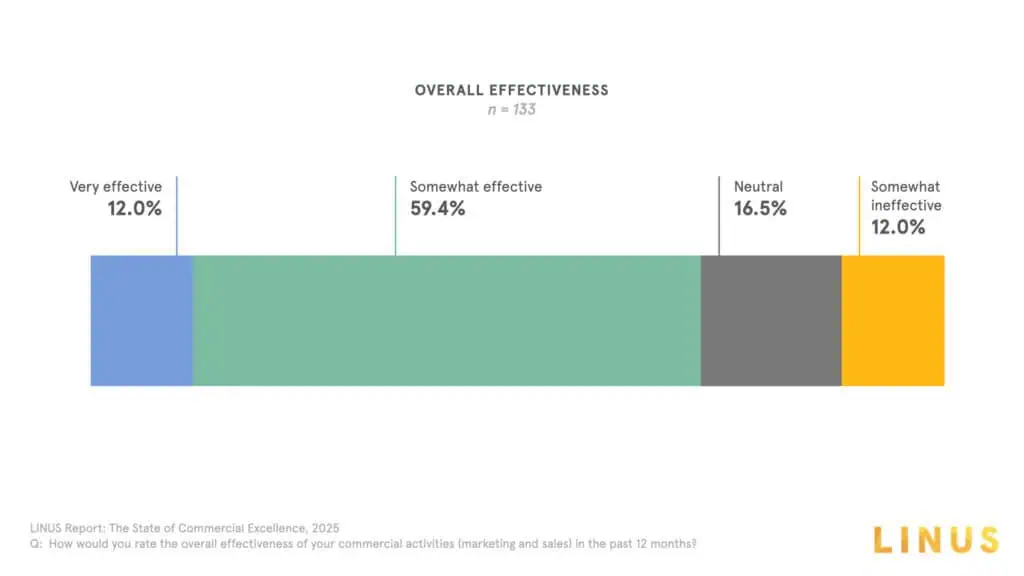
While 71% rate their overall commercial activities as effective, optimism fades when it comes to outcomes: average confidence drops to 64%, and one in five believe they have less than a 50% chance of meeting 2026 goals.
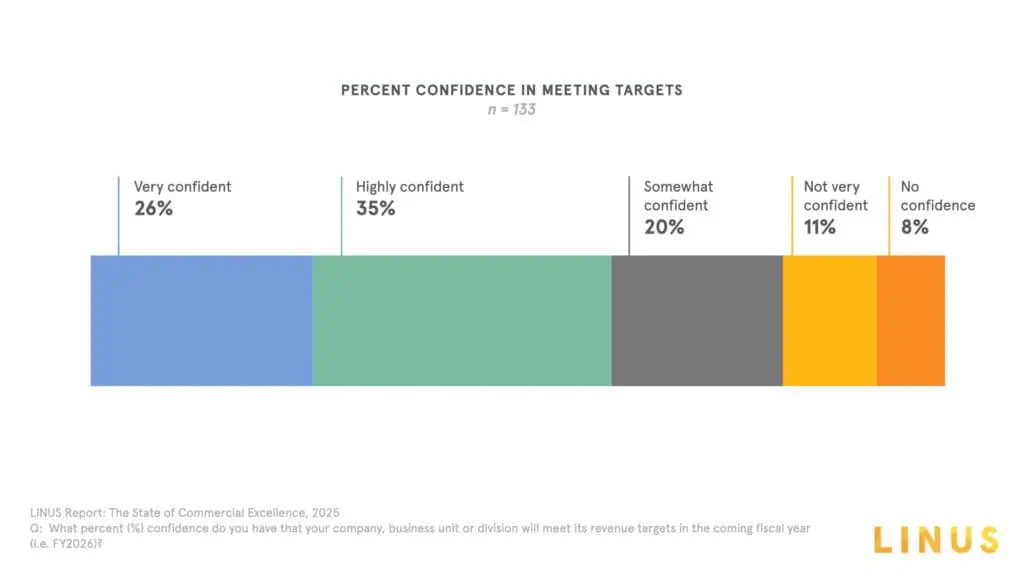
Nearly half of discretionary marketing and sales budgets are directed toward lead generation, followed by brand building (23%) and conversion (17%). Marketing leaders focus investment at the top of the funnel, while sales leaders push resources closer to closing deals.

The disconnect between budget and effectiveness: The Mid-Funnel Chokepoint
This perceived effectiveness tells a nuanced story between marketing and sales teams. Where c-suite and marketing leaders prioritize awareness; sales leaders prioritize retention. When asked what’s most effective, respondents pointed again to lead generation, but at an anemic 24% and brand building at an even lower efficacy. Yet lead nurturing and qualification remain weak links, while customer retention, though underfunded, is viewed as relatively powerful.
Despite viewing lead generation and brand building as the most effective of all activities in marketing, most organizations continue to underfund mid-funnel engagement and customer retention. Nearly half of budgets go to lead generation, while lead nurturing and qualification remain the least effective activities. Retention—though widely recognized as valuable—receives minimal investment, leaving a funnel heavy on awareness but thin on loyalty.
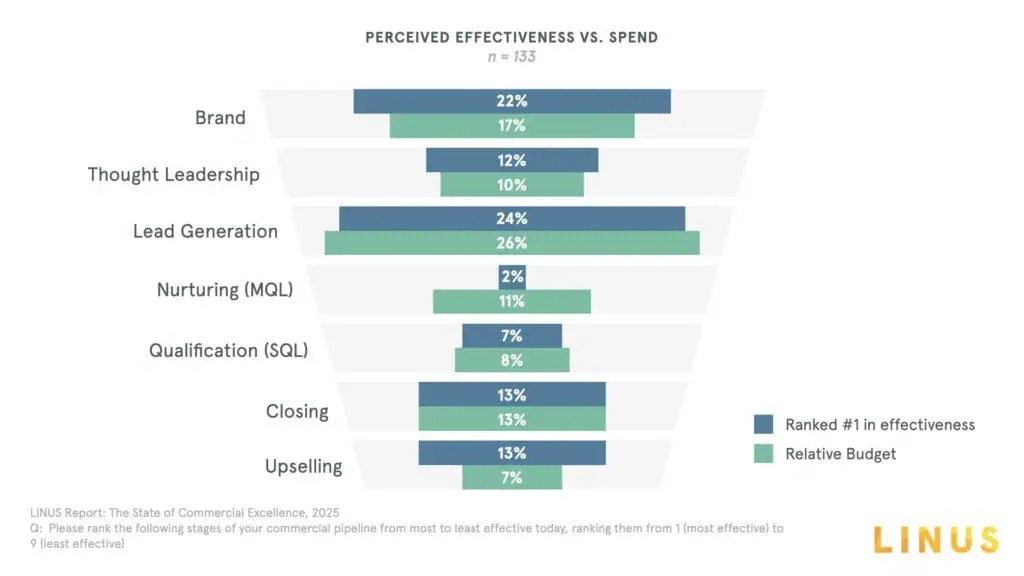
To close the gap in 2026, leaders must shift from activity-based planning to outcome-based prioritization.
What’s working in life science marketing and sales: Connection that builds trust
Despite years of digital-first transformation, the most effective tactics remain deeply human.
Trade shows lead both spend and impact: 58% of companies dedicate at least a quarter of their spend to them, and 61% call them their most effective marketing activity. Regarding effectiveness, sponsored webinars (41%) follow, demonstrating that educational, high-touch, hybrid experiences that blend live engagement with digital reach drive connection.

When asked how commercial leaders are sourcing their leads, the data continues to reinforce this high-touch, blended approach. Respondents are primarily relying on trade show scans (83%), webinars (75%), and inbound content (71%). This further demonstrates that audiences aren’t just looking for products — they’re looking for trusted partners to learn from.
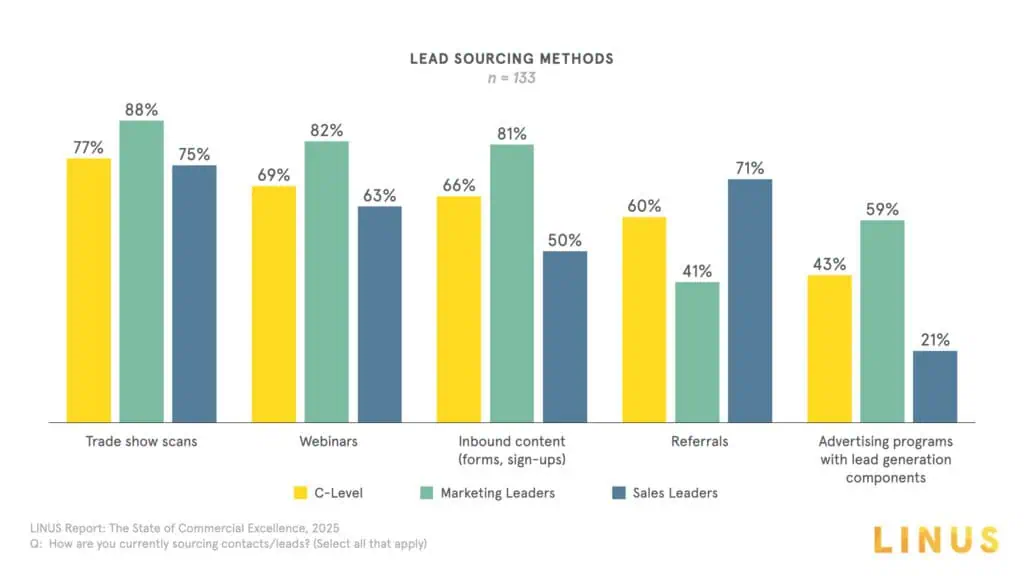
What’s changing the life science landscape: Using AI for Augmenting Expertise
The use of artificial intelligence is now a habit. Over 70% of marketing leaders report active AI use, most often for content generation, predictive analytics, and sales enablement.

Yet the proliferation in the use of AI is not without caution. Leaders cite concerns around quality, compliance, and internal expertise. Nearly 40% worry about the accuracy or credibility of AI-generated output, and another 17% cite the need for deeper in-house fluency.
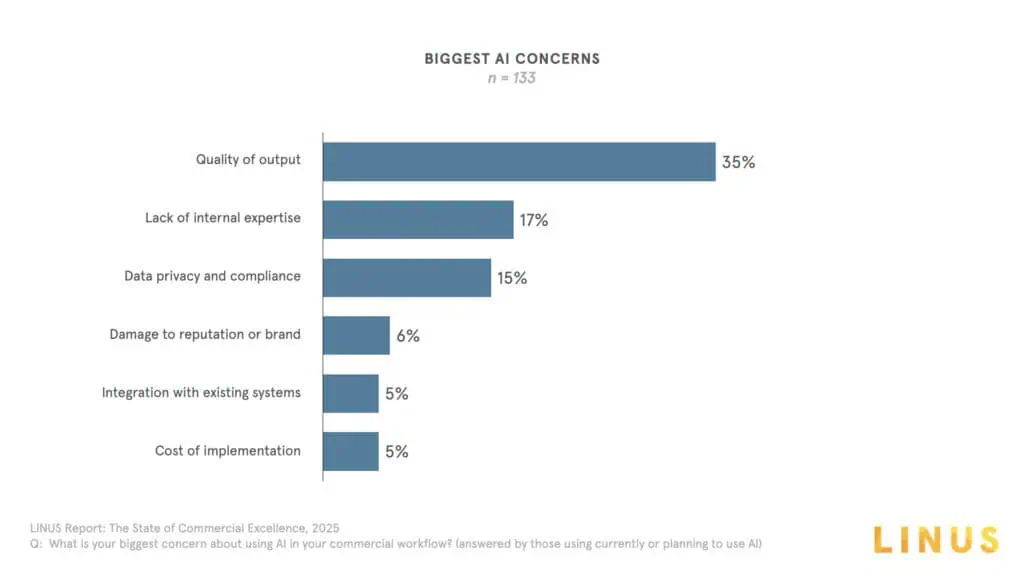
Moving into 2026, commercial leaders are treating AI as a tool for amplification, not automation — a shift that reinforces the enduring value of human expertise.
Strategic Direction Among Leaders: Focusing on Quality
In 2025, commercial leaders are focused on lead quality (44%), AI implementation (41%) and brand strengthening (40%). Sales teams, in particular, are pushing to refine — not just fill — the funnel.

At the same time, alignment remains a challenge: three-quarters of respondents see room to improve coordination between marketing and sales, and only 26% describe their teams as fully collaborative. To thrive in 2026, organizations must integrate strategy, systems, and storytelling into a unified commercial rhythm.
Where to focus next
Address your mid-funnel chokepoint: Resolve issues that are hindering progress in the middle stages of your sales pipeline.
Empower your sales team: Invest in resources and training to boost your sales teams’ effectiveness and revenue retention.
Build a thought leadership platform: Focus heavily on developing and promoting expertise and innovative ideas.
As 2026 approaches, one truth defines this new equation for growth: Connection — not just communication — is the new competitive advantage.